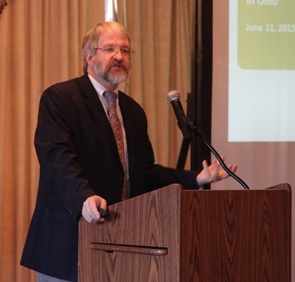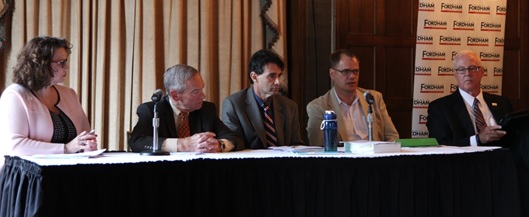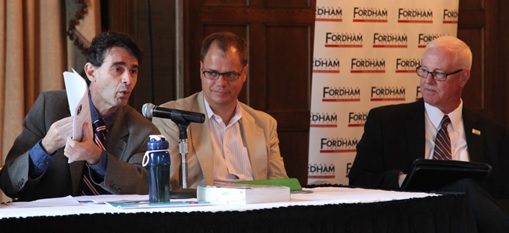Over the past year, Ohio legislators have been focusing on the state’s need to deregulate its education system. The Ohio Senate recently passed Senate Bill 3 (SB 3), legislation focused on deregulation and flexibility for high-performing districts. Governor Kasich has also brought up the subject. But what exactly does deregulation mean? How can the state and local districts deregulate without sacrificing accountability, and which areas are ready to be cut free from red tape?
To answer these questions, Fordham commissioned its newest publication, Getting Out of the Way: Education Flexibility to Boost Innovation and Improvement in Ohio. This report highlights the key issues policymakers need to consider when loosening the regulatory grip on public schools, and also offers several recommendations for local and state leaders.
One of the report’s authors, Education First’s Paolo DeMaria, presented the findings and recommendations at a breakfast event on June 11. DeMaria began his presentation by explaining why deregulation matters and why this is an ideal moment to pursue deregulation. (For news coverage of the event, see here and here.) After summarizing how some Ohio districts already utilize deregulation to innovate, DeMaria outlined his recommendations. (For more on the recommendations and our take, see the report’s foreword.)

Paolo DeMaria presents the findings
Next, a panel moderated by Education First’s Susan Bodary discussed the implications and difficulties of effective deregulation. The discussants included Tom Ash of the Buckeye Association of School Administrators; Steve Dackin of Columbus State Community College (and formerly of Reynoldsburg Public Schools); C. Todd Jones, a member of the State Board of Education; and Marc Schare, vice president of the Worthington City Schools Board of Education.

From left to right: Susan Bodary, Tom Ash, Marc Schare, C. Todd Jones, and Steve Dackin
Each panelist emphasized that schools are constrained by burdensome regulations—regulations that often don’t contribute to improving outcomes for kids. Marc Schare reinforced this point by discussing the vast number of regulations that school boards are subject to, including state and federal requirements and collective bargaining agreements. Schare said that such agreements limit his district’s ability “to define a career ladder” for highly effective teachers who want to move up in the ranks. A better option, he added, would be to use “compensation for strategic purposes,” such as paying in-demand or highly effective teachers more. Tom Ash pointed out that while districts are certainly subject to many regulations, they also tend to overregulate themselves. These locally imposed regulations, he noted, often “tie the hands of teachers in the classroom.”

Marc Schare shows a list of proposed rules and regulations
DeMaria remarked at the start of the event, “There's a part of us that wants to find the magic bullet....If we find it and just tell people to do it, it'll be fine. But experience shows that success looks different in various states and districts.” He’s correct, of course: There’s no easy fix in education. Lawmakers would do well to listen to his advice and that of the other panelists, who have real experience facing too many well-intended but counterproductive regulations.

